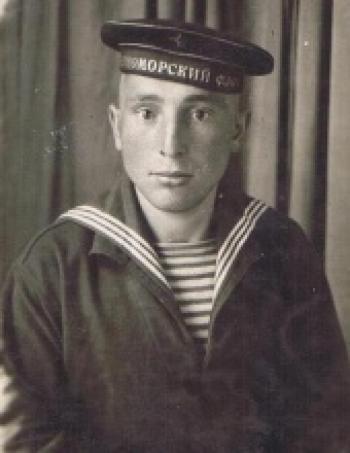Isaac Gefter was born in Vinnitsa in 1921. His father Yakov was a laborer.
Isaac completed a seven-year Yiddish school in his native city. He then began to work at a local chemical plant. In 1939, he was called up to serve in the Navy.
At the time of the outbreak of the Soviet-German War, Isaac Gefter was stationed in Sevastopol. From the very first day of the war (June 22, 1941), the city endured German air bombing. The Germans wished to blockade the Soviet vessels, but the naval artillery of the Black Sea Fleet was able to repel the attackers. From late October 1941 until mid-July 1942, the Red Army, together with the Sevastopol underground and the partisans, was able to hold the city. However, when the army had expended its strength, Sevastopol was abandoned.
Isaac Gefter was ordered to evacuate archival documents from the city. Since the overland route out of Sevastopol was risky, Isaac, who wished to avoid German captivity, chose to leave via the sea. Over five days, Gefter made his way along the coastline, wading through the bodies of dead soldiers; he eventually found himself in the open sea, where a passing ship picked him. Isaac arrived in Novorossiysk, where he met his commander, who had been evacuated from Sevastopol on a submarine. The latter found it hard to believe that Isaac had survived. The Red Army had incurred enormous losses: Some 200,000 Soviet soldiers died during the 8-month-long defense of Sevastopol.
Isaac Gefter went on to serve in the naval infantry until the end of the war. He met V-E Day in Constanța, Romania. Having taken part in many of the war's events, Gefter regarded the medal "For the Defense of Sevastopol" as his most important military decoration.
Isaac was discharged from the army in 1946, and returned to his native Vinnitsa.
In 1992, the Gefter family moved to Israel. Isaac Gefter died in 2008, and was buried in the city of Beersheba.







